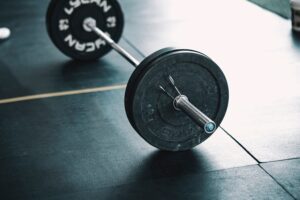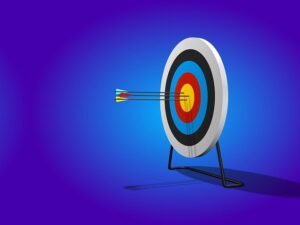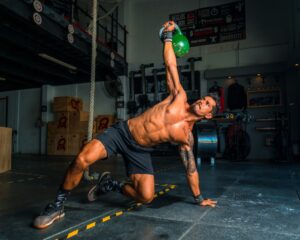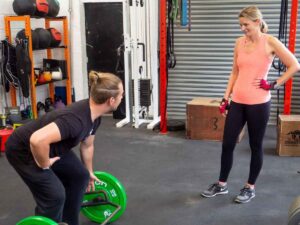The Fitness for Life Journal
MOVE | FUEL | MIND

The Question of Intensity
With the rise in popularity over the last few decades of HIIT, CrossFit and other high intensity forms of training, many people have come to believe that the harder they work, the more results they’ll get, or that if they don’t leave the gym feeling destroyed, they’ve somehow not trained hard enough. I’d like to

Are Barbells the Ultimate Training Tool?
Introduction: To start this discussion, I’d like to begin with a little history about fitness training: The 1960s saw the gradual introduction of exercise machines into the rare strength training gyms of the time. Weight training became increasingly popular in the 1970s, and for years, the majority of gyms and health clubs were filled with

My Movement Philosophy
Introduction At the point of writing this, I’ve been working as a fitness coach in the industry for 16 years. Ideas and practises have evolved in that time. We’ve gone from lots of sitting on machines back to using freeweights and bodyweight exercises. We’ve seen many fads come and go, but some approaches arrive on

What’s Your Body Type?
In the 1940s an American psychologist, William Herbert Sheldon, developed a system to categorize human physiques into three distinct types called Somatotypes: Ectomorphs – thin individuals, characterized by smaller bone structures, and typically thinner limbs (think endurance athletes). Mesomorphs – individuals characterized by a medium sized bone structure and athletic bodies holding a significant amount

December Resolutions
It happens every year. January comes around and people feel really motivated to get fit / lose weight. They up their fitness regime, either joining a new gym or digging out their membership cards for the gym that they’ve been too busy to make it to throughout December. They set some strict rules on nutrition

Missing the Mark
Missing the Mark I often use this analogy during coaching, when people look like they’re getting frustrated at struggling to grasp a movement. It was delivered to me on a course years ago, and I thought I’d share it with any of you who haven’t heard it before. Look at the following diagrams. They represent

The 12 Point Plan – Implementation
How should you approach the 12 Point Plan? I definitely wouldn’t suggest trying to implement them all at once. This would set you up for failure. Much better to try and implement a small number of Points at a time. Then when you’ve managed to make them a habit, add more. You may be doing

The 12 Point Plan – 12. Meditation
Benefits: The last of the Mind points in our 12 Point Plan is meditation, which is used by people all over the world as both a spiritual practise and a way to calm the mind. Benefits include: Dis-identifying from the thinking mind – We are so used to being in our heads (using our thinking

The 12 Point Plan – 11. Gratitude and Affirmations
Benefits: The benefits of practicing gratitude are nearly endless. People who regularly practice gratitude by taking time to notice and reflect upon the things they’re thankful for experience more happiness, feel more alive, sleep better, express more compassion and kindness, and even have stronger immune systems. We would suggest you do this practise in the

The 12 Point Plan – 10. Journal
Benefits: The second point in the Mind realm is to start developing a deeper insight into what’s going on for you mentally and emotionally. The purpose of this tool is to create some space to acknowledge any lingering emotional issues that may have accumulated in your life, process them, and then change how you think

The 12 Point Plan – 9. Sleep
Benefits: The first of the points in the Mind realm has such an enormous impact on both your physical and mental wellness that it definitely needs some attention. Benefits of sleep: Increased life expectancy Improved memory (plus reduced risk of Alzheimers) Increased concentration and ability to learn Reduced risk of diseases, such as Cancer, Type

The 12 Point Plan – 8. Personalised Plan
Benefits: I believe there isn’t a one fits all solution to nutrition. Our bodies are as different on the inside as the outside and the ideal fuel for one is different to the ideal for another. Once you’ve got the basics of drinking enough water, got used to eating lots of vegetables, and enough protein

The 12 Point Plan – 7. Protein
Benefits: The third point in the Fuel section is to ensure you’re eating enough protein. This will support your training and can aid in achieving fat loss goals. Benefits of eating adequate Protein: Thermic Effect – it takes more energy to breakdown proteins than carbohydrates. Necessary for repair – cellular as well as muscular Lean

The 12 Point Plan – 6. Vegetables
Benefits: There is so much disagreement in the world of nutrition about what the exact ideal diet is. I believe the reason for this is because diets should be individualised, but nutritionists have been searching for an one fits all solution, which has led them to conflicting results from their research. However, one of the

The 12 Point Plan – 5. Water
Benefits: Our first point for Fuel isn’t actually what you’re eating, but what you’re drinking. There are so many possible negative side effects of being dehydrated that this needs to be eliminated before looking at what you’re eating. Our bodies are made up of around 60% water and we can’t last more than a few

The 12 Point Plan – 4. Energising
Benefits: The final point in our Move realm; the idea of this type of movement is to increase energy flow in the body, rather than deplete energy. You should finish the session feeling more energised, rather than tired. Paul Chek, world renowned Health & Fitness Coach, calls this type of exercise “Working In” rather than

The 12 Point Plan – 3. Conditioning
Benefits: The next point in the Movement realm is what many know as Cardio or Aerobic work (but can be more than just that, as you’ll see soon). Benefits of Conditioning work: Improve cardiovascular function Improve insulin sensitivity (can prevent type 2 diabetes) Decrease visceral (deep tissue) fat Improve metabolic function (teach your body to

The 12 Point Plan – 2. Balance & Strength
Benefits: Some of my favourite Coaches who I follow talk about “Balance being King and Strength being Queen”. If you look at how babies and children develop their physical abilities, it’s balance first, then strength later. Strength Training has become much more popular over the last decade or so with most gyms seeing an increase

The 12 Point Plan – Overview
Introduction: The 12 Point Plan is a gathering together of my ideas on exercise, nutrition and other tools I’ve used, both on myself and with my clients over the last 15 years of working as a Personal Trainer. They represent a “holistic” approach to health, that whilst not exhaustive, I feel is extremely effective when
